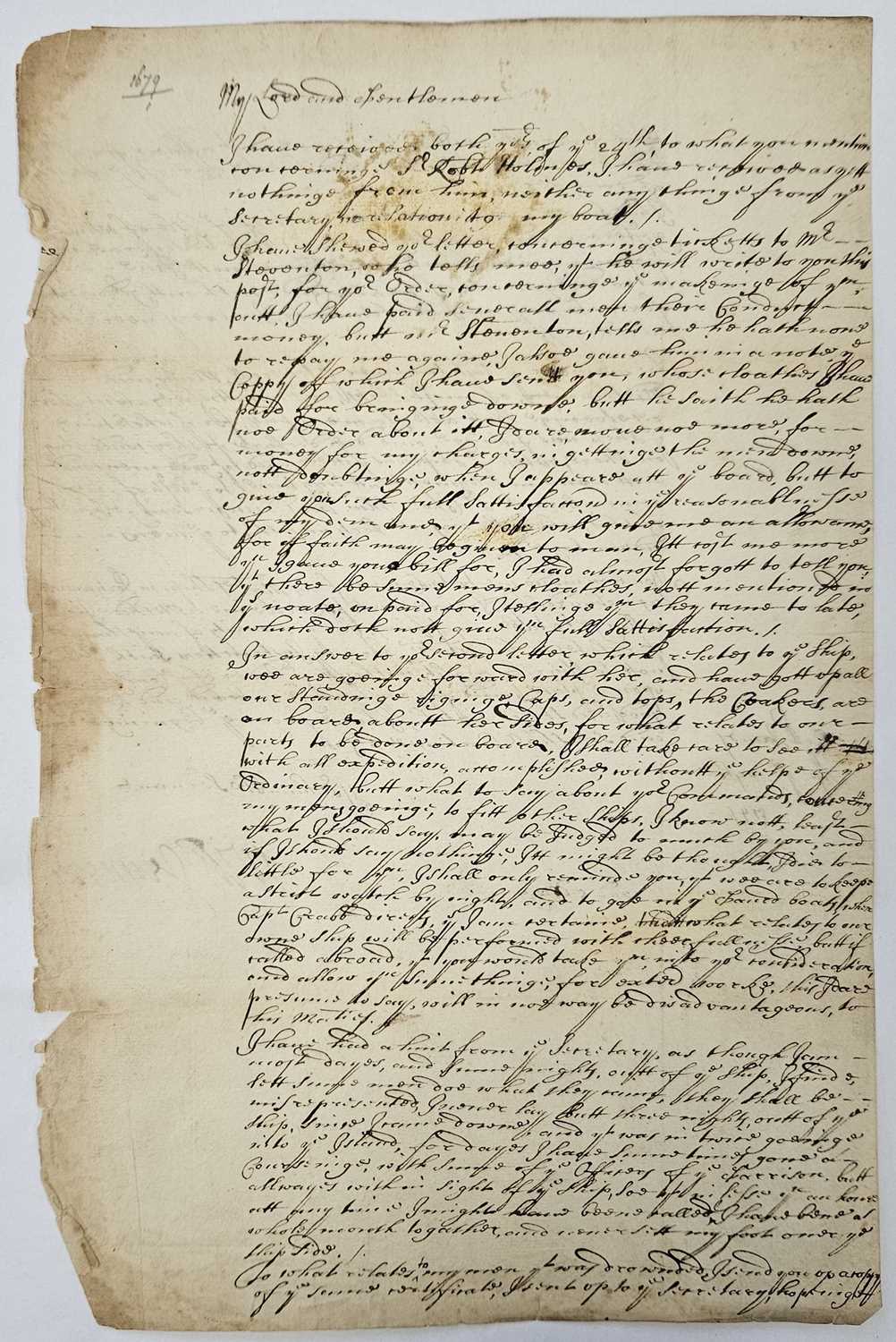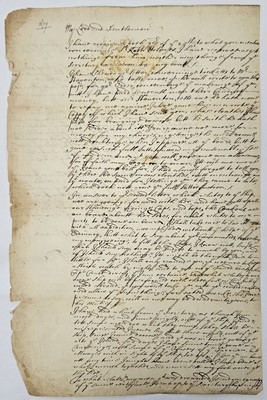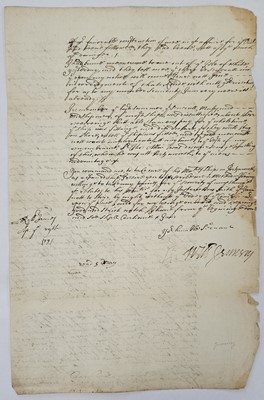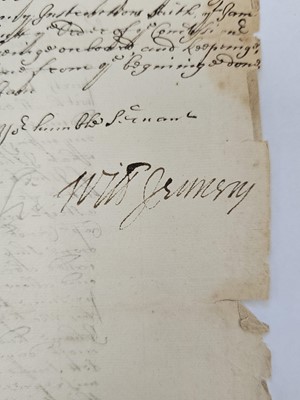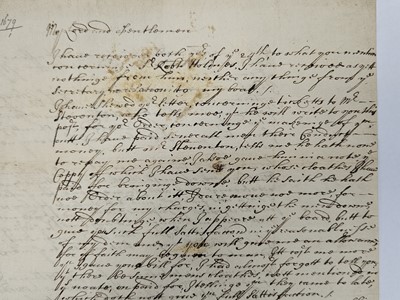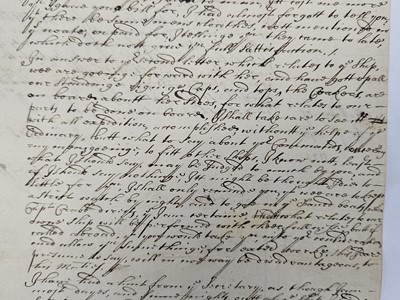Ending 8th Aug, 2023 16:00
Timed - Militaria, Naval and Maritime Auction
Sir William Jennens (fl. 1648 - 1690. Autograph letter signed. The Navy of King Charles II
English Restoration Navy of Charles II. Sir William Jennens (fl. 1648 - 1690), autograph letter signed. A detailed report on the state of the Navy on the south coast and the Isle of Wight. Undated but dated in a later hand as 1679. Folio, 2pp.
Excerpts include: 'My Lord and Gentlemen, ... I have received both yours of ye 24th to what you mention concerning Sir Robert Holmes. I have received as yet nothing from him neither anything from ye secretary in relation to my boat ... in answer to your second letter in relation to ye ship 1000 are going forward with her and have got up all our standing, riggings caps and tops, the coakers are on board about her sides ... I remember that last summer that severall mates and midshipmen of most ships was dissatisfied about there receiving but able seamans pay for the whole time ye ship was sitting and did discourse that they would stay on shore until ye ship was fitted and that good men would not want imployment at any time'
Notes:
Sir William Jennens (1661–1690) was a naval captain and Jacobite. In 1661, he became the second lieutenant of the Adventure. In 1664, he served as lieutenant of both the Gloucester and the Portland, and on October 11, he was promoted to captain of the Ruby, part of the white squadron in the Battle of Lowestoft, after which he received a knighthood. Jennens continued to command the Ruby in the four-day fight from June 1 to 4, 1666. Subsequently, he was transferred to the Lion and participated in the action of July 25. During the burning of the Dutch shipping at the Vlie on August 8, he commanded the second post under Sir Robert Holmes.
Jennens was later appointed to the Sapphire and, in the disastrous summer of 1667, he led a division of small vessels assembled for the defence of the Thames. Pepys implied that Jennens had a dissolute and profane lifestyle (Diary, October 20, 1666), describing him as a "proud, idle fellow" and suspecting him of misconduct (ib. January 29, 1668–9). Pepys also mentioned that a complaint he brought against his lieutenant, Le Neve, was a drunken quarrel where both were to blame.
In 1670, Jennens commanded the Princess and led a convoy to the Mediterranean. Upon his return, he was imprisoned in the Marshalsea, supposedly because he had his wife on board during part of the voyage, which had no detrimental effect on the service. It appears that the Duke of York forgave the offence, as Jennens commanded the Victory in the engagements between Prince Rupert and De Ruyter in 1673. He subsequently served as captain of the Gloucester, the French Ruby, and the Royal James guardship in Portsmouth.
In July 1686, he was appointed to the Jersey, another guardship in Portsmouth. On February 20, 1687–8, he faced a court-martial for brawling ashore with Captain Skelton of the Constant Warwick, another guardship. Both officers were reprimanded and fined nine months' pay (Minutes of the Court-martial). Despite this, Jennens was appointed to the Rupert on September 5, 1688, and likely joined Lord Dartmouth's fleet in November.
After the abdication of James II, Jennens decided to flee to France. He joined the French navy and participated in some capacity in the Battle of Beachy Head on June 30, 1690. According to Charnock, he humbled himself to become a third captain under a French admiral. In an intercepted letter from Alice Teate to her husband, Matthew Teate, dated July 16 and enclosed in Killigrew's letter of July 18 (found in the Home Office Records, Admiralty, vol. iv.), Jennens is referred to as "one of their admirals." However, the French records do not recognize him in either of these roles. It is more likely that he served as a volunteer and pilot on Tourville's staff. Unfortunately, no further information is available about him.
Sold for £90
